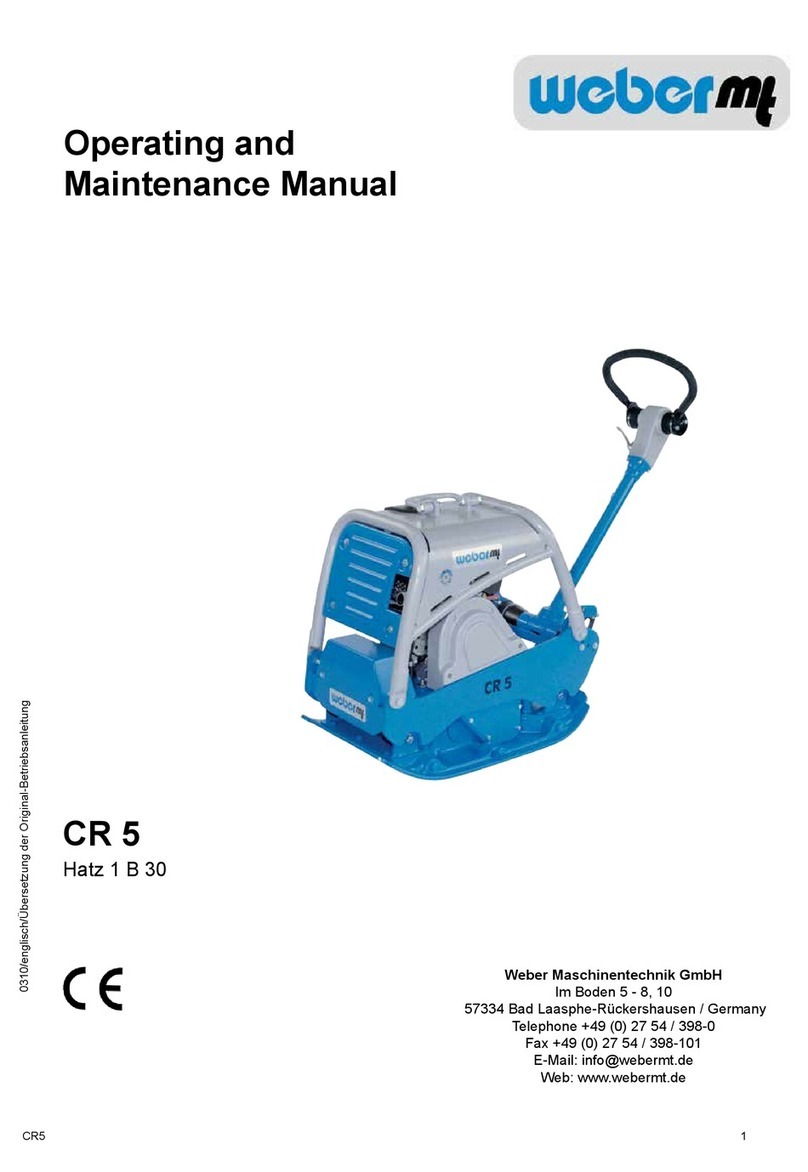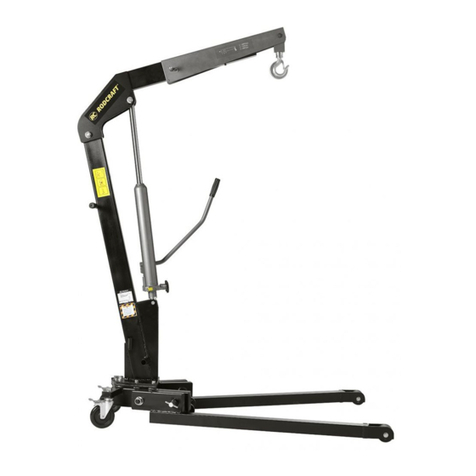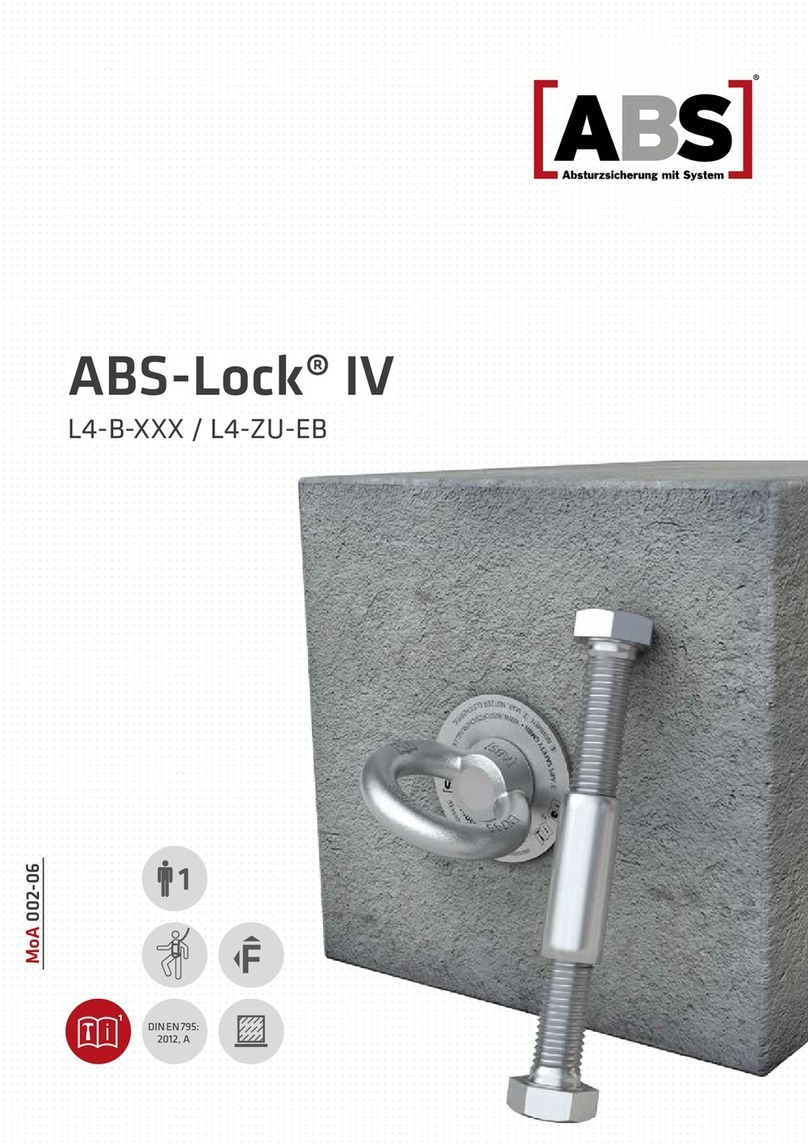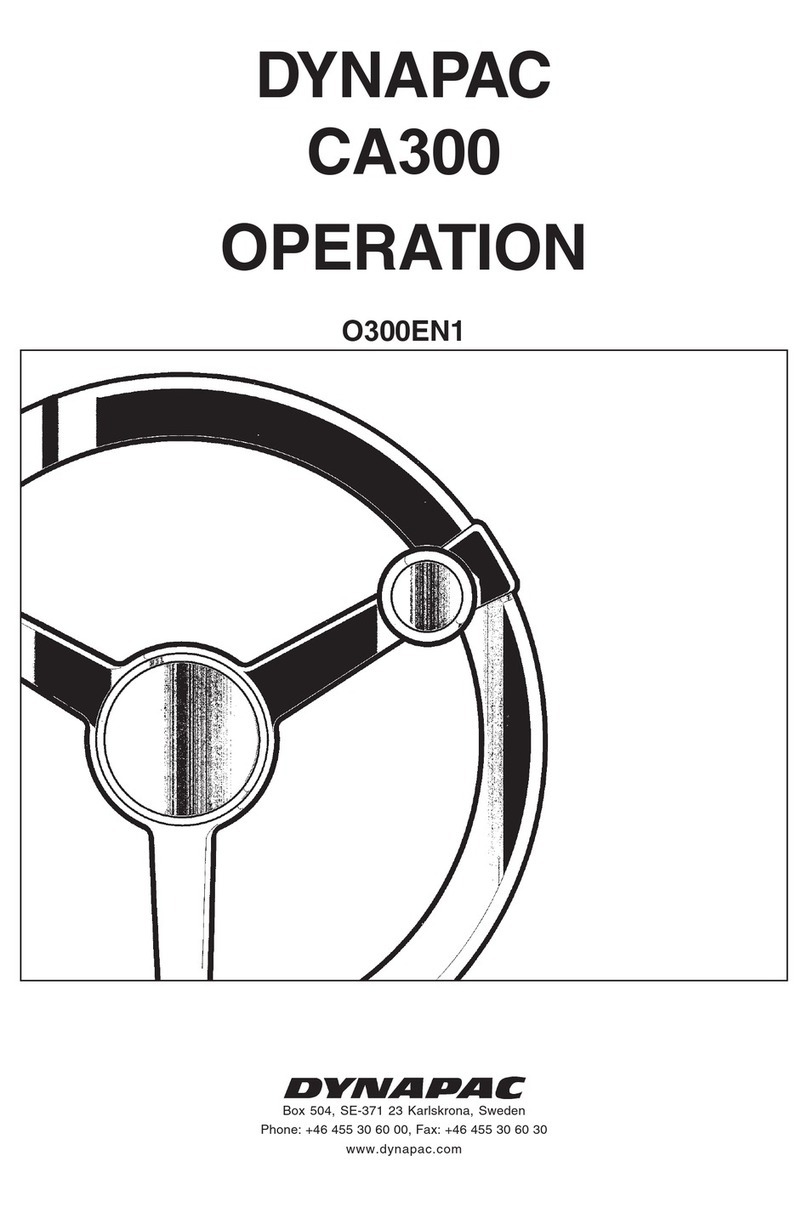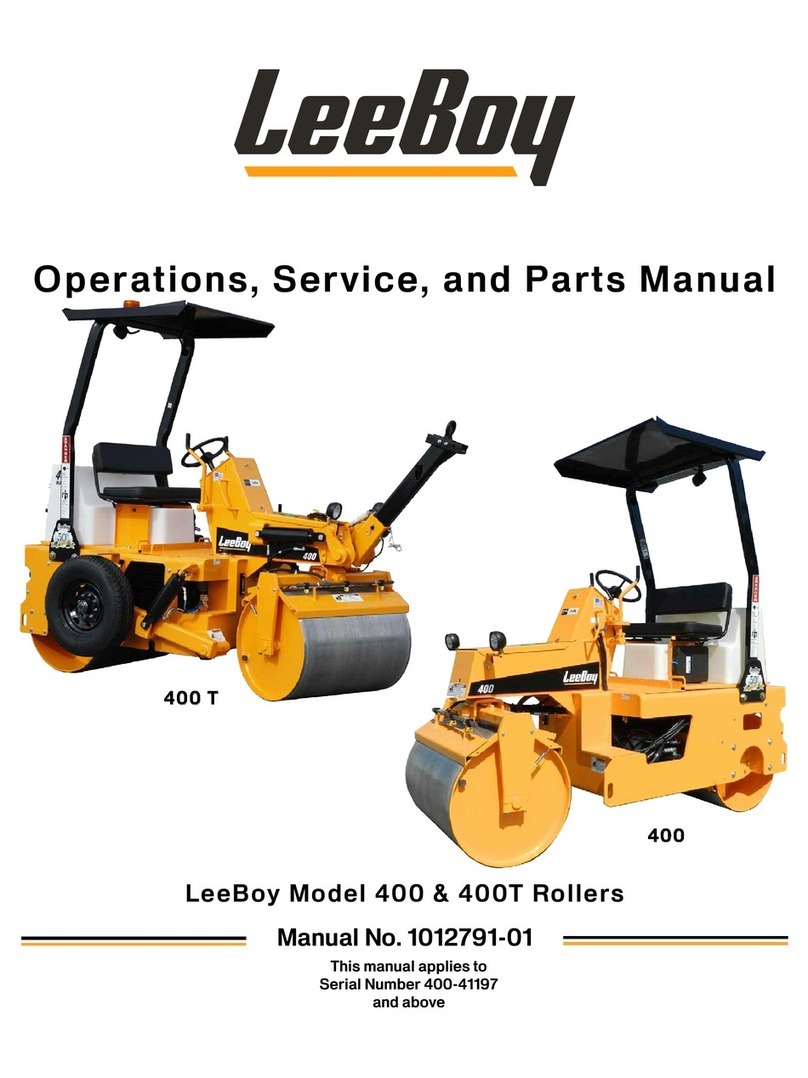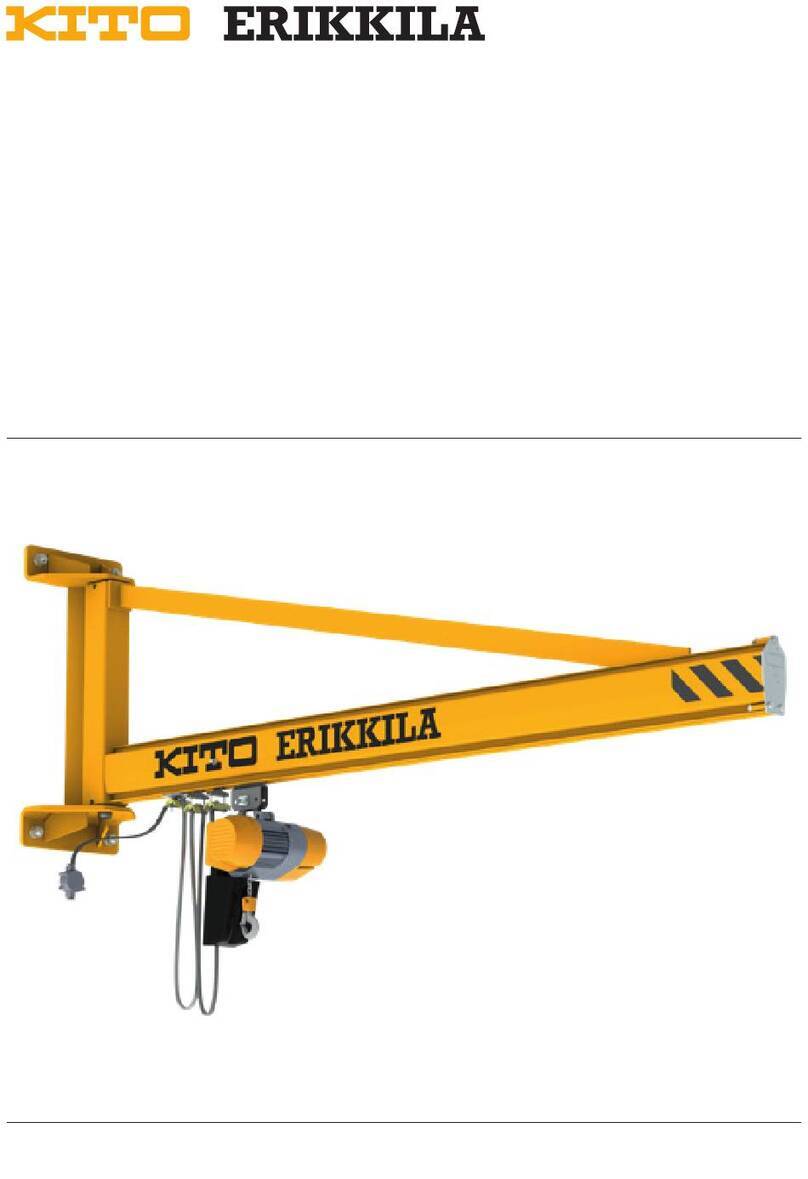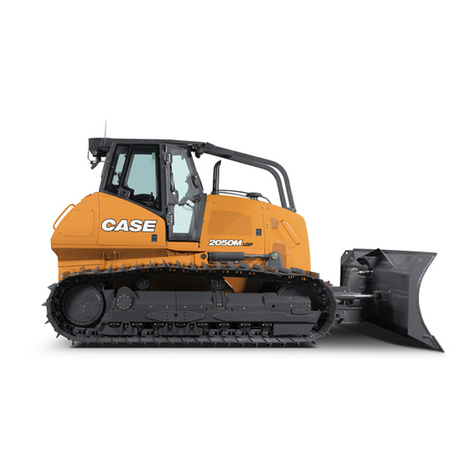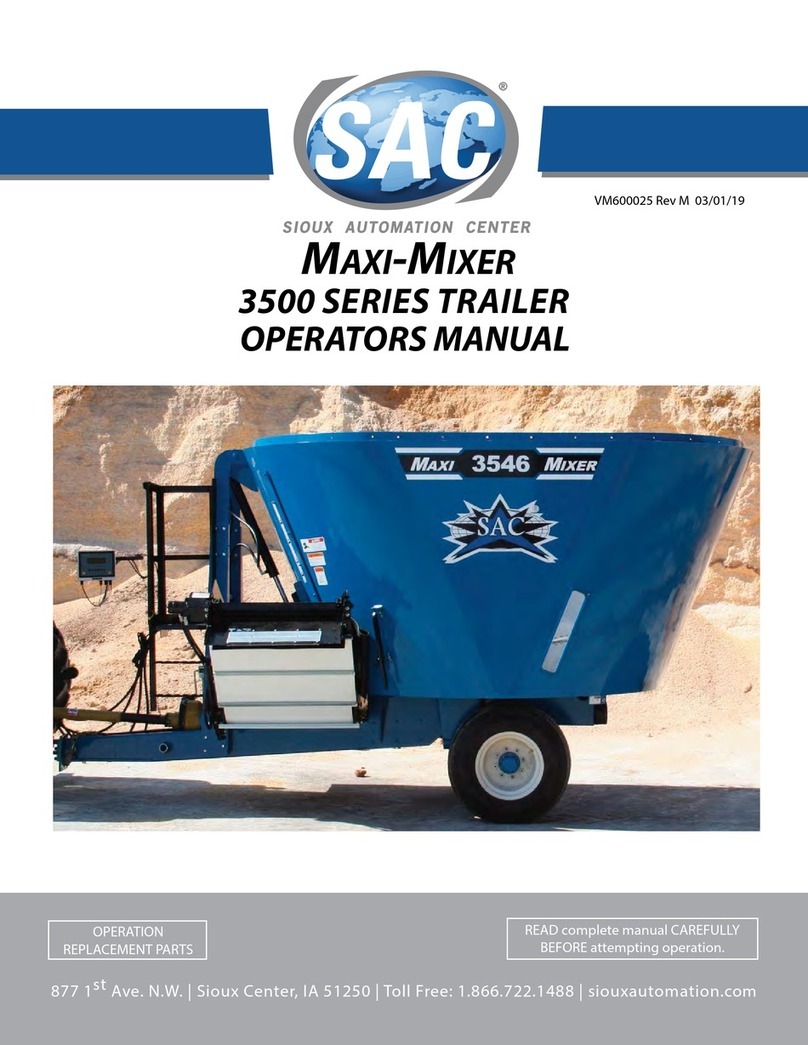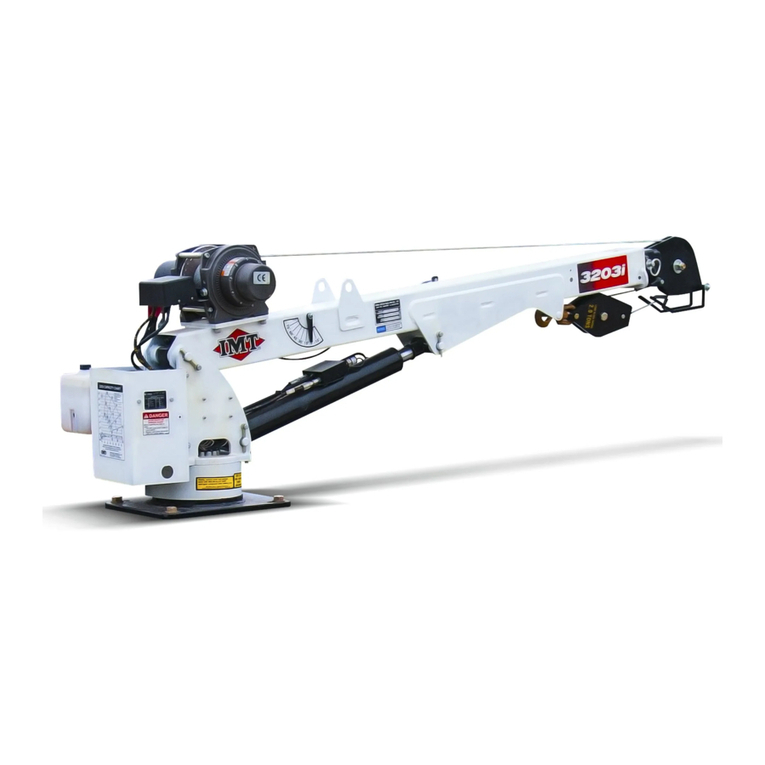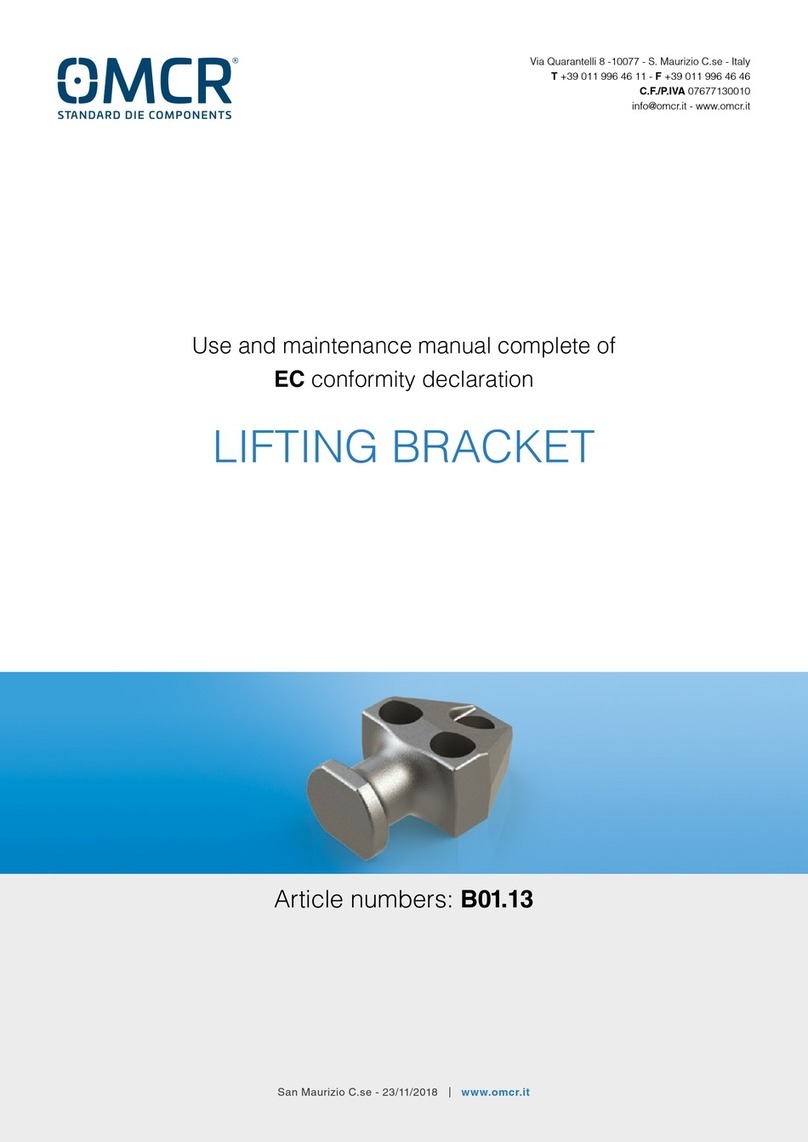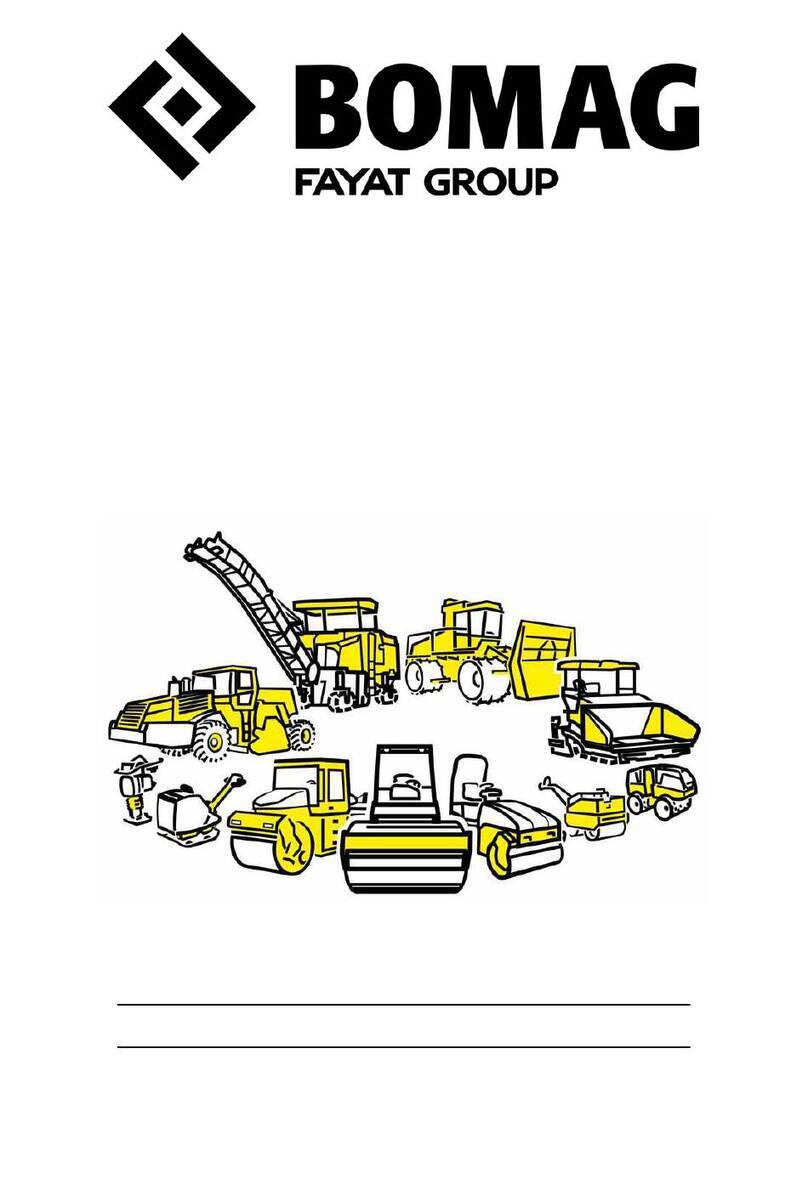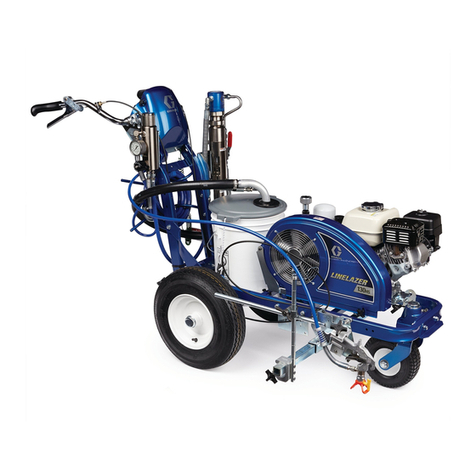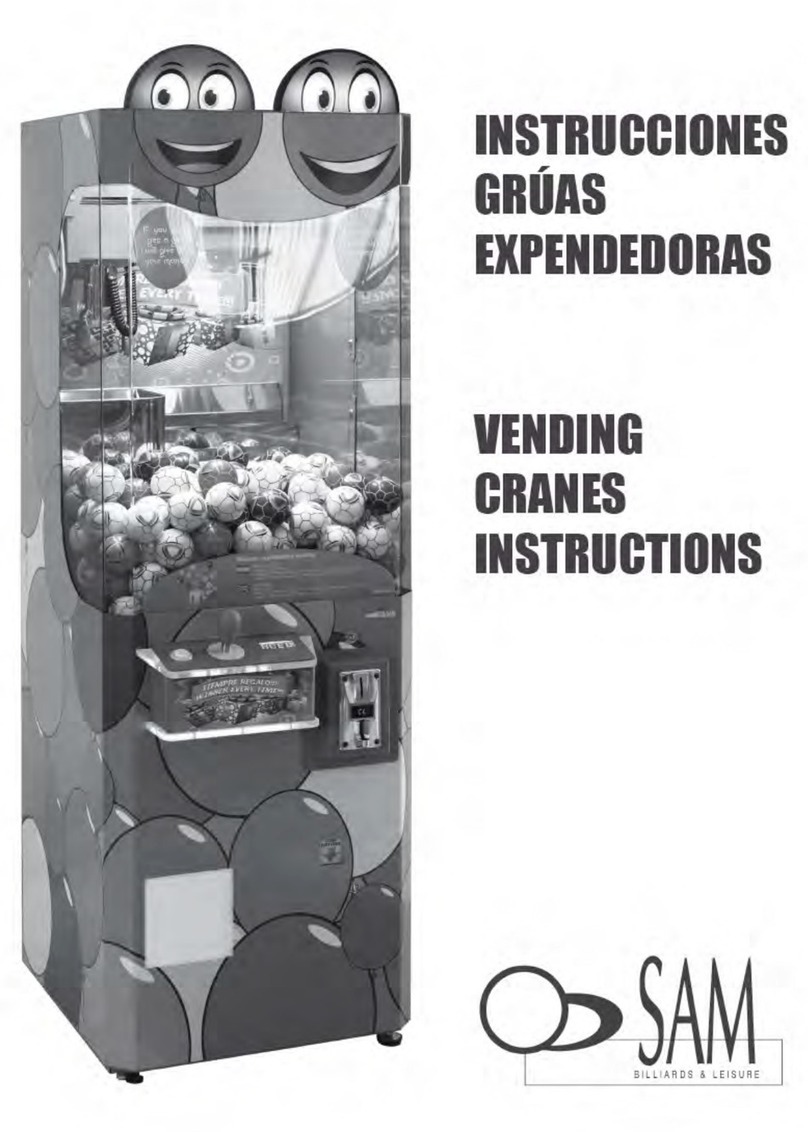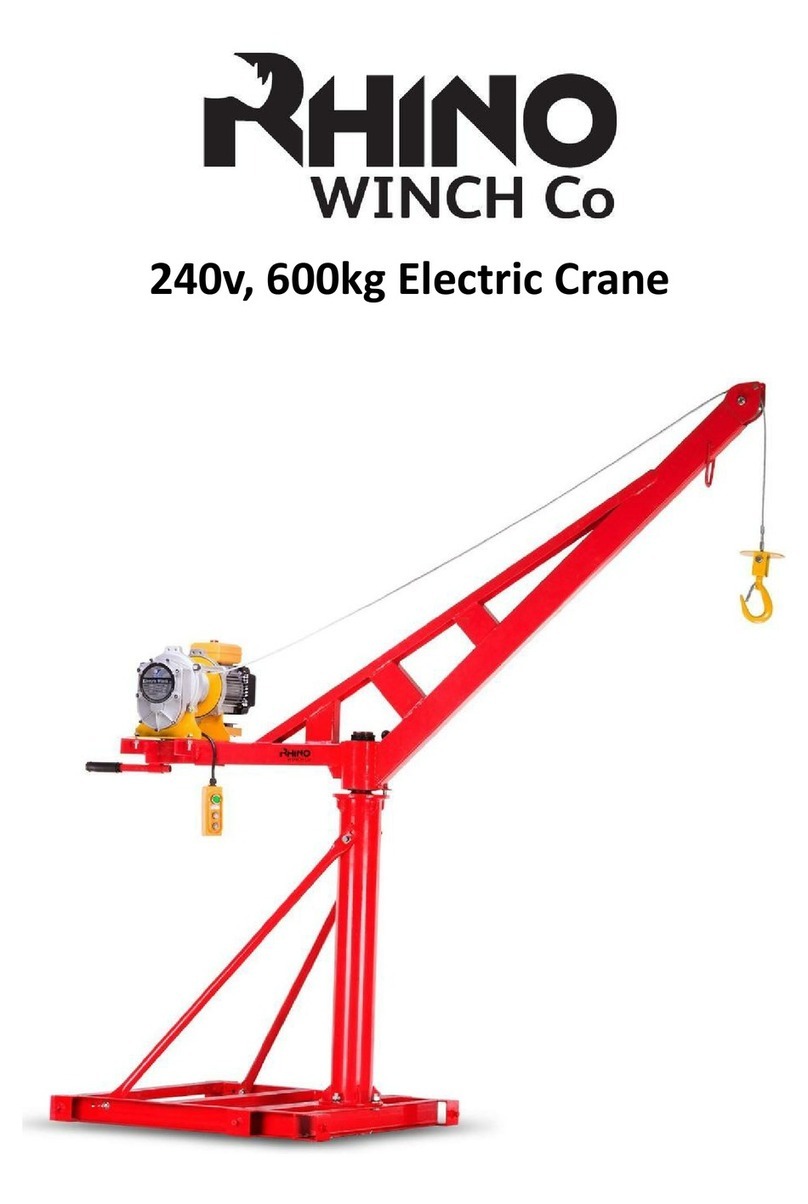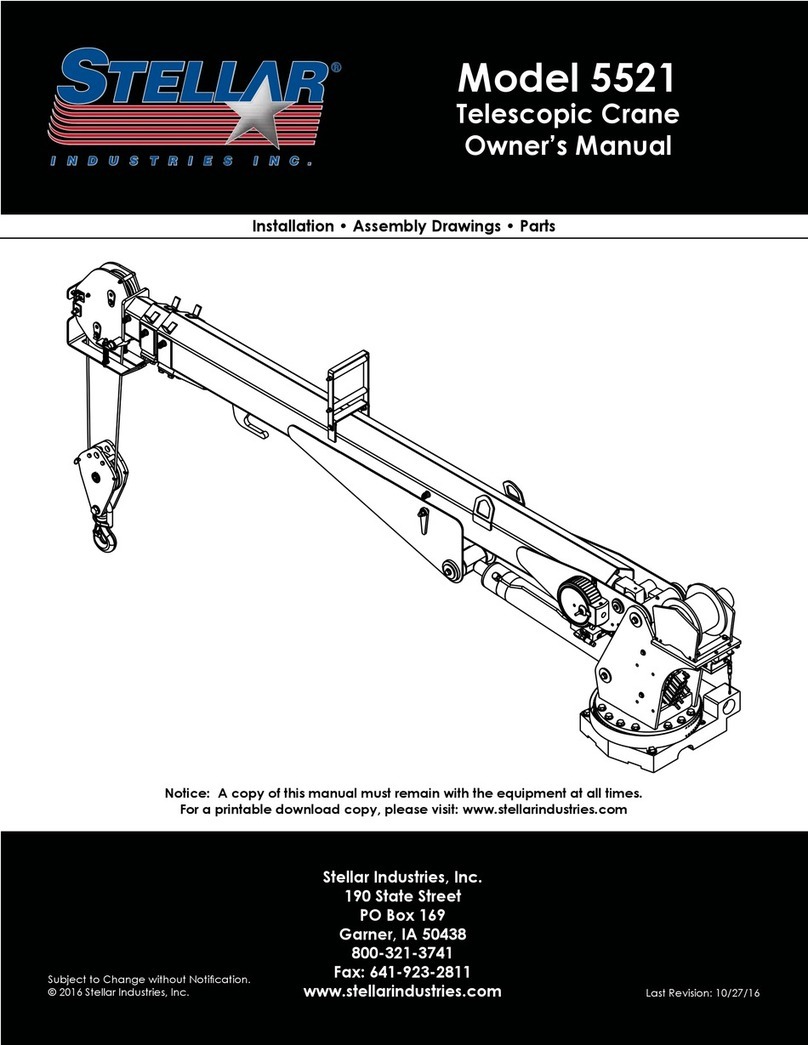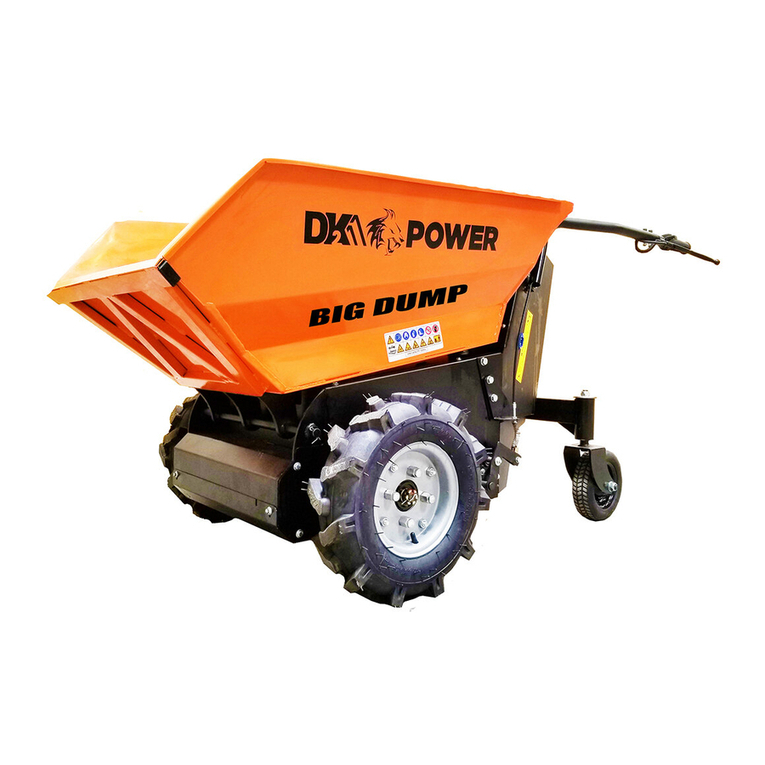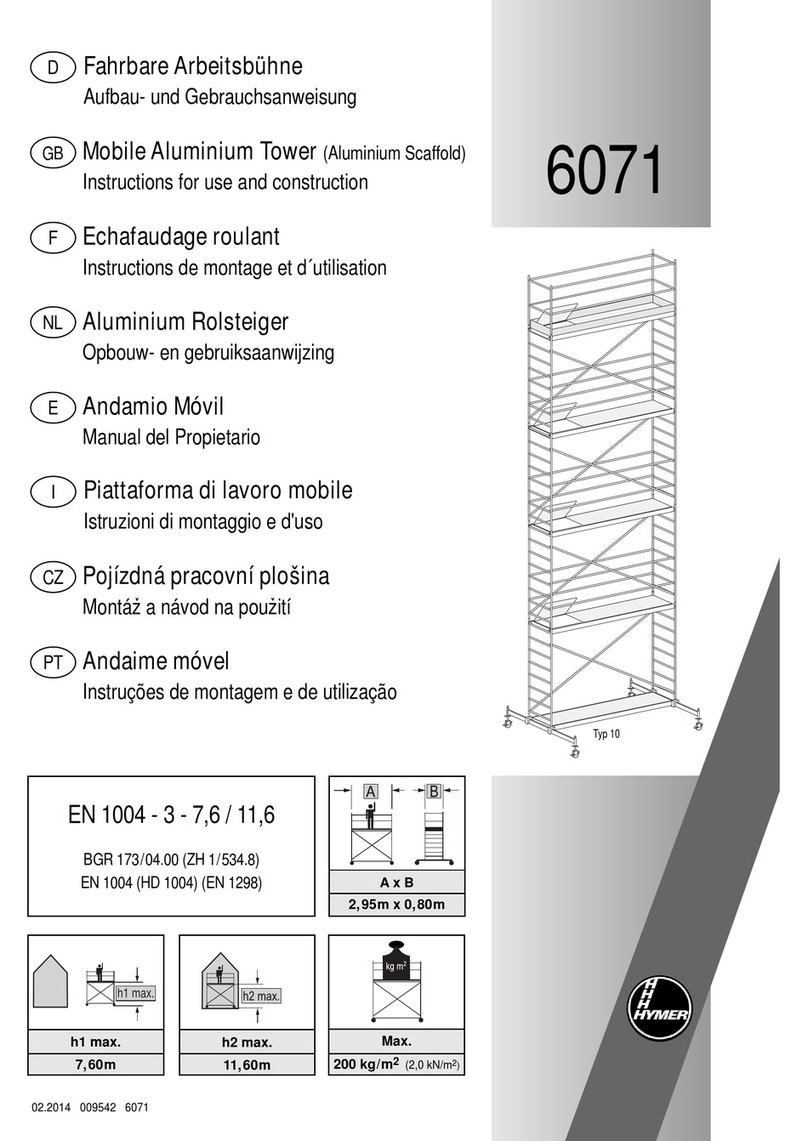ROKAMAT CV C Series User manual

1) Rokamat CV C 43-130 (21BR1ACC0047)
Rokamat CV C 43-200 (21BR2ACC0048)
Rokamat CV C 43-300 (20BR3ACC0011)
Rokamat CV C 28-130 (21BR1ACC280037)
Rokamat CV C 28-300 (20BR926000002)
2) 2014/30/EU, 2006/42/EG, 2012/19/EU, 2011/65/EU,
2001/95/EG, EG No. 1907/2006
3) EN 60745-1:2009/A11:2010, EN 60745-2-12:2009, EN ISO 12100:2010-11
4) Kammerer GmbH, An der B 10, 75196 Remchingen
Remchingen, 03.08.2021
Beate Kammerer
Head of Technical Documentation
EN
Original Instructions
3
CV C
Art.-Nr.: 91400, 91500, 91600, 92400, 92600
© Kammerer GmbH. Printed in Germany. Abbildungen unverbindlich.
Technische Änderungen vorbehalten. BA_CV C_EN_003
ROKAMAT
Kammerer GmbH
An der B 10
75196 Remchingen
Deutschland
www.rokamat.com

CV C
2
[1]
1-1
1-6
1-5
1-4
1-3
1-2
I
0
[2]
[3]
[5]
[4]
4-2
4-3
5-1
4-4
4-5
X
1-7
3-1
4-1

CV C en English
3
1. Symbols ......................................................................... 3
2. Safety Instructions .................................................... 3
3. Intended Use ................................................................ 3
4. Device Components................................................... 3
5. Commissioning............................................................ 3
6. Instructions for Use................................................... 3
7. Working with the Power Tool ................................4
8. Maintenance and Care..............................................4
9. Spare Parts and Accessories..................................4
10. Environmental Protection.......................................4
11. Declaration of Conformity.......................................4
12. Technical Specifications ..........................................4
13. Troubleshooting ......................................................... 5
For your own protection and for the protec-
tion of your power tool, pay attention to all
parts of the text that are marked with this
symbol!
Risk of electric shock!
Read operating instructions and safety no-
tices! *)
Wear protective goggles! *)
Wear ear protection!
CAS Li-Ion battery pack *)
Removing battery pack!
Do not dispose of as domestic waste! *)
Important advice/information
Direct Current (DC) *)
Confirms the conformity of the power tool
with the directives of the European Com-
munity. *)
Confirms the conformity of the power tool
with UK legislation. *)
*)These symbols are (also) on the device.
For your safety
Read all safety warnings and instructions.
Failure to follow all safety warnings and in-
structions may result in electric shock, fire
and/or serious injury.
Do not use this power tool before you have
thoroughly read and completely understood
this Instruction Manual, the enclosed <Gen-
eral Safety Instructions=, instructions for bat-
tery packs and chargers.
Keep all safety instructions and information for
future reference. Pass on your power tool only to-
gether with these documents.
Please also observe the relevant national industrial
safety regulations.
Special Safety Instructions for Concrete Vi-
brators
Always keep your hands and face away from vi-
brating head when operating.
Switch off the tool immediately if you notice abnor-
mal noise or something faulty during operation.
Inspect the tool carefully for breakage, cracks or
deformation if you accidentally drop it or strike it
against something.
Do not carry the tool with finger on switch.
Do not set the tool down and switch it on. The vi-
brating head may whip around out of control and
cause an accident.
Be careful not to allow water, wet concrete or the
like to get into the tool. Do not let the motor fall into
wet concrete.
Insert the vibrating head carefully between
iron/steel frames or reinforcing rods not to come in
contact with them.
Do not bend the flexible drive shaft.
Do not use the tool in the rain. Do not clean the tool
in water.
Additional safety instructions
Don’t put the running motor on the ground! Dirt may
get sucked in and cause damage.
Keep the carry case out of reach of children. Chil-
dren may suffocate or be strangled when playing
with the carry case.
Emission levels
NOTE! Values for the A-weighted sound pressure
level and for the total vibration values can be found
in the <Technical specifications= table at page 4.
The vibration emission level given in this infor-
mation sheet has been measured in accordance
with a standardized test and may be used to com-
pare one tool with another. It may be used for a
preliminary assessment of exposure.
CAUTION! The indicated measurements refer to
new power tools. Daily use causes the noise and vi-
bration values to change.
The declared vibration emission level represents
the main applications of the tool. However, if the
tool is used for different applications, with differ-
ent accessories or poorly maintained, the vibration
emission may differ. This may significantly in-
crease the exposure level over the total working
period. However, if the tool is used for different ap-
plications, with different accessories or poorly
maintained, the vibration emission may differ. This
may significantly decrease the exposure level over
the total working period.
The noise produced during work may damage
your hearing. Wear ear protection!
Environmental conditions
Operation
Temperature range: +5° C to +50° C
Humidity: ≤ 85 %, non-condensing
Climate: dry
Transport and storage
Temperature range: -5° C to +55° C
Humidity: 0 % to 70 %
Climate: dry, roofed, dew protected
The hand-held battery tool ROKAMAT Cordless
Concrete Vibrator CV C is intended for compacting
concrete and concrete joints.
Only sufficiently qualified and trained personnel is
allowed to work with the Cordless Concrete Vibra-
tor.
The intended use includes the observance of the
operating instructions, in particular the safety in-
structions and the observance of generally recog-
nized accident prevention regulations.
The specified illustrations can be found in fig. [1]
on page 2 of the operating instructions.
1-1 Flexible drive shaft
1-2 Vibrating piece
1-3 Slide switch
1-4 Battery
1-5 Motor (with gripping surface)
1-6 Snap hook
1-7 Belt
Before switching on the power tool: Unpack
power tool and accessories and check that no
parts are missing or damaged.
Motor mounting
The motor [1-5] is not allowed to be placed on the
floor during operation, but must be hooked in the
snap hook [1-6] of the provided belt [1-7] (resp.
shoulder belt).
Switching the electric power tool on and off
[2]
Switching on: Push the sliding switch [1-3] for-
ward. For continuous activation, now tilt
downwards until it engages.
Switching off: Press the rear end of the slide
switch [1-3] and release it.
Risk of injury, electric shock!
Always remove the battery pack before per-
forming any type of work on the machine!
1. Symbols
2. Safety Instructions
WARNING!
5. Commissioning
6. Instructions for Use
4. Device Components
3. Intended Use
WARNING!
CAUTION!
⎓
CAUTION!
Contents
X
X

CV C en English
4
Installing or removing battery pack [3]
To insert: Slide the battery pack [1-4] in until it en-
gages.
To remove: Press the battery pack release button
[3-1] and pull the battery pack downwards and out.
Rotating battery pack [5]
The rear section of the machine can be rotated 270°
in three stages, thus allowing the machine's shape
to be adapted to the working conditions. Only oper-
ate the machine when it is in an engaged position.
Hold the tool straight when inserting/operating.
Use the tool within the effective vibration range at
equidistant intervals. The effective air bubble re-
moval range is about ten times the diameter of the
vibrating head, or around 280 mm resp. 420 mm.
Effective leveling and removal of air bub-
bles
Removal of the air bubbles is complete after you
have worked the tool throughout each effective
range, the concrete stops shrinking, and the mortar
has risen evenly to the surface, giving off a light ap-
pearance. Gently remove the operating tool not to
leave holes.
Vibrating too long in a single place causes con-
crete segregation.
When the coarse aggregate segregates when
placing concrete, shovel out the coarse aggre-
gate and put it where there is plenty of mortar.
Then use the tool on it. Don’t leave coarse aggre-
gate in the segregated condition.
When concreting a slope site, always pour from the
bottom at the beginning. This way the weight of the
freshly poured concrete and vibration will lead to
effective removal of air bubbles. Conversely, if the
pouring is done first from above, the mortar will
separate and eventually slide to the bottom.
After finishing work
Use a wet cloth or the like to carefully wipe off any
wet concrete left on the tool after use. Extra care
should be given to thorough cleaning of the vents,
switch area, cover openings, etc.
Risk of injury, electric shock!
Always be sure that the tool is switched off and
the battery pack is removed before performing
maintenance work on the machine!
- Repairs may be carried out by an authorized cus-
tomer service center only.
- Repairs to electrical tools must be carried out by
qualified electricians ONLY!
-
During the warranty period do not loosen the
screws on the housing. Non-compliance will deem
the guarantee obligations of the manufacturer null
and void.
Remove dust from the motor regularly
It is possible that particles deposit inside the power
tool during operation. This impairs the cooling of
the power tool. Conductive build-up can impair the
protective insulation of the power tool and cause
electrical hazards.
The power tool should be cleaned regularly, often
and thoroughly through all front and rear air vents
using a vacuum cleaner or by blowing in dry air.
Prior to this operation, remove the battery pack and
wear protective glasses and dust mask.
Replacement of the flexible drive shaft [4]
Disassembling: On the motor side, press in the
press button [4-2] in the borehole [4-5] with a tool
(e.g. screwdriver) and pull out the protective hose
[4-1]. Now the shaft core [4-3] can be replaced.
Mounting: In reverse order. Make sure that the
shaft core [4-3] is threaded into the square [4-4] in
each case.
The two boreholes for the push button at the
drive shaft serve as length adjustment between
shaft core and protective hose. The shaft core
should be freely movable in length and must not
get compressed!
Other accessories, in particular insertion tools, can
be found in the manufacturer’s catalogues. Ex-
ploded drawings and spare-part lists can be found
on our homepage: www.rokamat.com.
Use only original ROKAMAT spare parts and work
tools.
Observe national regulations on environmentally
compatible disposal and on the recycling of dis-
used machines, packaging and accessories.
For Great Britain and EU countries: Do not
dispose of electric equipment or battery
pack together with household waste mate-
rial! In observance of the European Direc-
tives, on Waste Electric and Electronic-
Equipment and Batteries and Accumulators
and Waste Batteries and Accumulators and
their implementation in accordance with
national laws, electric equipment and bat-
teries and battery pack(s) that have
reached the end of their life must be col-
lected separately and returned to an envi-
ronmentally compatible recycling facility.
Please ask your dealer about disposal options!
It is expressly declared that the Cordless Concrete
Vibrator listed on the first page under 1) from the
serial number indicated onwards complies with all
relevant provisions of the directives or regulations
listed in 2) and that the harmonized standards
listed in 3) have been applied. The technical docu-
mentation is available from the authorized docu-
mentation agent named in 4).
Do not use this tool to move concrete within a
form. The mortar will just move away and the
coarse aggregate will remain, causing segrega-
tion.
Check all wearing parts once a month.
Cordless Concrete Vibrator CV C Art.-Nr. 91400, 91500, 91600, 92400, 92600
Model
CV C 43-130
CV C 43-200
CV C 43-300
CV C 28-130
CV C 28-300
Voltage of battery pack
18 V DC
Flexible shaft assembly
length
130 mm
200 mm
300 mm
130 mm
300 mm
Vibration head
(diameter x length)
43 x 310 mm
28 x 350 mm
Overall length (without
battery pack)
1860 mm
2550 mm
3565 mm
1895 mm
3590 mm
Net weight (without bat-
tery pack)
4,9 kg
5,7 kg
6,5 kg
4,0 kg
5,1 kg
A-weighted sound pressure level (see <Emission levels< in cap. 2):
Sound pressure level LpA
80 dB(A)
Sound power level LWA
91 dB(A)
Uncertainty KpA, KWA
3 dB
Total vibration value (see <Emission levels< in cap. 2):
Emmission value ah
17,5 m/s2
Uncertainty K
1,5 m/s2
8. Maintenance and Care
WARNING!
7. Working with the Power Tool
9. Spare Parts and Accessories
CAUTION!
ADVICE!
10. Environmental Protection
ADVICE!
11. Declaration of Conformity
12. Technical Specifications
ADVICE!
X
Li-Ion
ADVICE!

CV C en English
5
Problem
Possible causes
Remedy
The electronic signal dis-
play [5-1] lights up and
the load speed decreases.
The temperature is too high!
Run the machine in idling until the
electronics signal indicator switches
off.
The electronic signal dis-
play [5-1] and the ma-
chine does not start.
The restart protection is active.
The machine will not start if the
battery pack is inserted while the
machine is on.
Switch the machine off and on again.
Motor power fluctuates.
Carbon brushes worn.
Replace carbon brushes.
CV C not working.
Battery discharged.
Charge battery.
13. Troubleshooting
If problems other than those listed occur, please contact your ROKAMAT service workshop or your local
specialist.
This manual suits for next models
10
Table of contents
